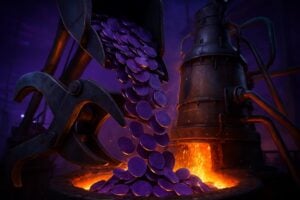The latest major crypto news comes from Elrond, with MultiversX leading the campaign for a greener Web3, offsetting 25% more CO2 than its emissions network. See what this is all about and all the details below.
MultiversX’s green contribution: the latest crypto news from Elrond
As anticipated, MultiversX, a leader in blockchain infrastructure with a high-performance, energy-efficient architecture, recently announced a significant increase in its efforts to promote a greener blockchain.
Specifically, the company has taken the initiative to offset 25% excess CO2 emissions from its network operations, paving the way toward a more sustainable future for Web3.
This decision was supported by a corporate carbon footprint (CCF) analysis conducted by experts from Offsetra.
The analysis revealed that in order to reach its carbon neutrality goal, MultiversX would need to offset a total of 5,253 tons of CO2 emissions from its blockchain network and related operations.
However, the company chose to go further, committing to offset an additional 25% of CO2, bringing the total to 6,569 tons. This is equivalent to 16,422,500 miles of car driving or 16,422 Bitcoin transactions.
To make this commitment a reality, MultiversX will invest in verified Offsetra projects focused on preserving biodiversity and supporting local communities.
This step demonstrates MultiversX’s strong commitment to reduce the environmental impact of blockchain technology and help build a more sustainable future for the cryptocurrency industry and Web3.
MultiversX’s technical initiatives to operate sustainably
In the evaluation process, all aspects of blockchain operations were included, from nodes to office activities and travel with associated accommodations.
In a landscape where many blockchain implementations require excessive amounts of energy to operate, the project stands out because of its efficient Proof of Stake consensus algorithm, powered by 3,200 validation nodes, with a keen eye on energy operations.
A report recently released by the White House Office of Science and Technology (OSTP) estimated that total global electricity consumption for crypto-activities falls within a wide range of 120 to 240 kWh per year.
This is equivalent to 0.4% to 0.9% of total annual global electricity consumption, thus exceeding the total consumption of many countries such as Argentina or Australia.
From the beginning, MultiversX was designed with the goal of operating sustainably. Thanks to technical innovations such as Adaptive State Sharding, the network of more than 10,000 servers can process up to 30,000 transactions per second at minimal cost.
This efficient use of resources results in significant economies of scale, allowing the MultiversX protocol to adapt to demand by adding more shards to the network. These outstanding results are accompanied by minimized carbon emissions, ensuring a harmonious balance between efficiency and environmental responsibility.
Mincu: “shifting the balance toward a healthier planet”
In addition to its remarkable energy efficiency, MultiversX maintains an unwavering commitment not only to achieving carbon neutrality, but also to contributing to a more sustainable future.
In fact, for the third year in a row, MultiversX’s network continues to support millions of DeFi and NFT transactions, offsetting 25% more CO2 emissions than the network itself generates.
MultiversX CEO Beniamin Mincu had the following to say about this:
“In our pursuit of progress, we must intertwine innovation with environmental responsibility. For our part, we have not only neutralized blockchain operations, employee activities and travel impacts, but also increased carbon offsetting by 25%.
Our commitment to a brighter climate future is unwavering, aiming not just for balance, but also to tip the scales towards a healthier planet.”
MultiversX is dedicated to pioneering solutions that address complex global issues and have a positive and lasting impact on the environment. Setting an exemplary standard for sustainability in the blockchain industry, it envisions a future where technology and environmental stewardship work in synergy.









